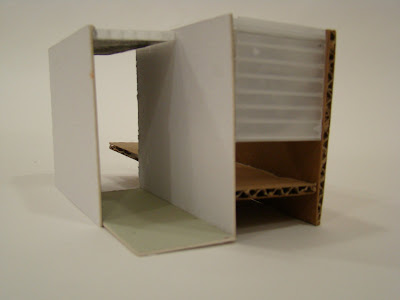


It looked like we were adding piles of trash upon piles of trash, but we were actually trying to come up with a building form. Individually we came up with pieces that formed a "building structure". Once we finished our individual exercise, as a group we came together and pieced all of our individually parts together. Basically we made puzzle pieces and then we tries figuring which part went where (without the picture on the box). After coming up with various forms, we choose one that excited us or was appealing and we made sketch up models. Still we were at a very conceptual state, and we could not decide on a single building form. We tried piecing the sketch up models together but that was not as effective as putting our sketch models together.


























